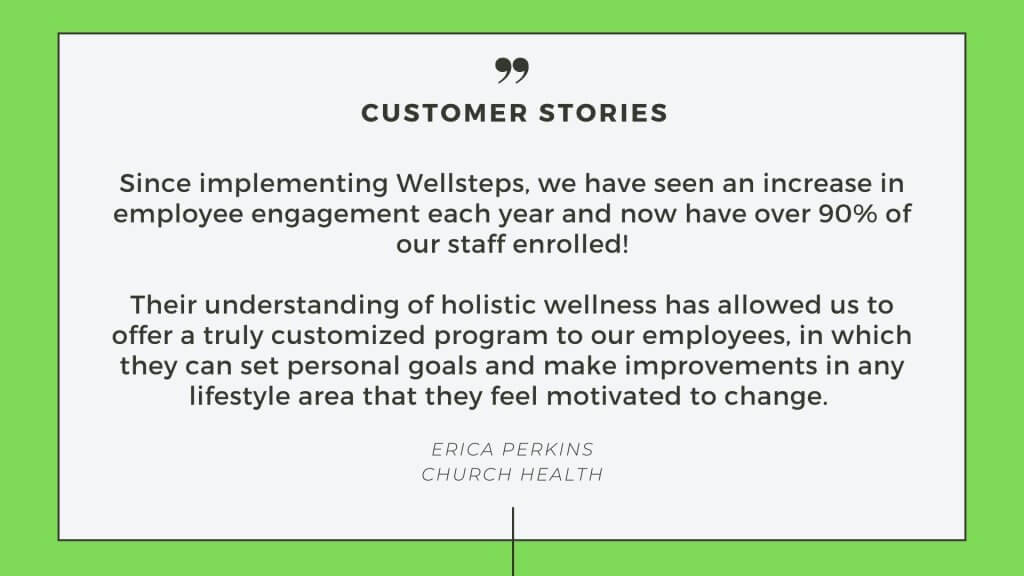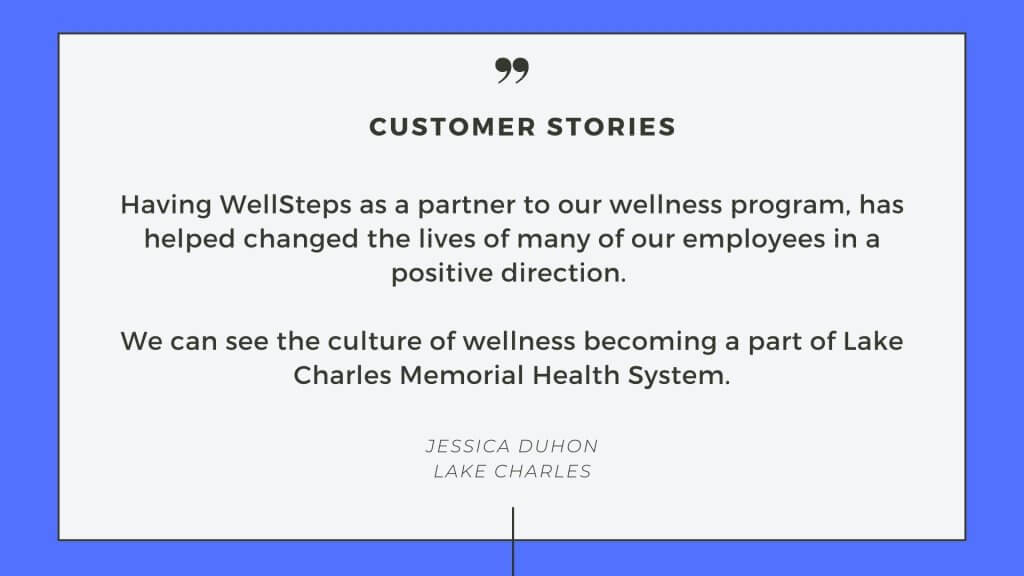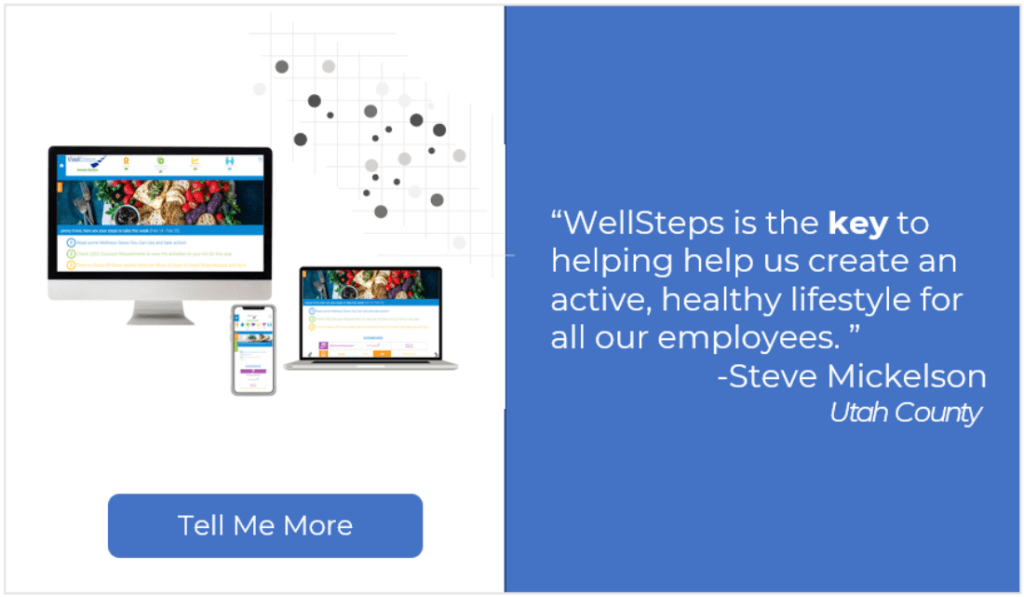As a business manager, you have the responsibility to notice when there’s a dip in employee performance and you may try increasing productivity in the workplace. When one or a few of your employees perform below par and seem to be in a dry spell and there’s not much yield being produced, it’s high time you revisit your employee wellness programs.
Wellness programs are primarily created to help workers improve and maintain their health in and out of the workplace, but these strategies also have a direct impact on increasing productivity in the workplace.

In this article, we take a closer look at the typical causes of productivity loss and how you can take advantage of wellness programs to enhance productivity among employees.
The Cost of Productivity Loss
When employees go through burnout, lethargy, or low morale, they might end up practicing presenteeism. It’s when workers come to work, clocking in and out without really doing much in between. This decreases overall productivity levels and drags the bottom line down.
As you may expect, presenteeism comes with a cost. It is an expense that the company pays without having to quantitatively account for it. Unlike health insurance costs, presenteeism is not measurable and cannot be tracked to be included in financial reports. They are money leaks that are not assessed or scrutinized because they are not visible.
In fact, presenteeism may even be costlier than absenteeism. A worker who is absent from work does not consume company resources while a worker who is present but does not accomplish anything wastes resources, and gets their salary paid for the day.
Presenteeism may even be costlier than absenteeism.
While some companies have employee productivity metrics, they may fail to capture their direct link to presenteeism. Productivity loss caused by suboptimal health and personal issues needs to be addressed because, according to research, work-related and personal issues such as work overload, financial concerns, and lack of office support significantly contribute to presenteeism.
Factors that affect the mind, body, and emotions contribute to presenteeism, which drags performance down. Performance is dragged down by:
- physical limitations
- emotional distress
- lack of training
- conflict with superiors
Given this cause-and-effect relationship, companies are faced with the challenge of reducing presenteeism and increasing productivity in the workplace through countermeasures. This is where wellness programs play a significant role.
RELATED: Healthy Employees: An Important Factor For Workplace Productivity
Research, Risks, Remedy for Increasing Productivity in the Workplace
Research called Gallup-Healthways Well-Being Index (WBI), conducted in 2008 by the wellness management company Healthways in partnership with Gallup, sheds light on the correlation between individual wellness and productivity.

The Healthy Factor
The researchers gathered data from different companies that have around 20,000 employees. The respondents answered a series of questions related to health behaviors and health risks, such as:
- chronic pain
- body mass index
- blood pressure
- diabetes
- asthma
- other illnesses
With a series of questions related to certain productivity barriers at work, the research was also able to measure a total presenteeism score. With this data, the research showed that healthy employees are more productive compared to those with less than optimum health and habits.
RELATED: The Costs and Advantages of an Employee Wellness Program
Wellness-Related Determinants of Productivity: What Does Research Say?
To detect patterns and correlations, the employees who got the top 20% highest scores were considered high-presenteeism employees. Using multiple comparisons with health behaviors like smoking, unhealthy diet, and lack of exercise yielded results with a higher likelihood of presenteeism among those with poor health habits as mentioned. Some key statistics included:
- Smokers have a 28% higher rate of presenteeism than non-smokers.
- Those who don’t eat healthy were at a 66% higher rate compared to those who follow a good diet.
- Employees who rarely exercised showed a 50% higher presenteeism rate than those who regularly exercised as part of their routine.
The study also showed that poor health behaviors eventually result in chronic diseases and health risks. The higher the health risks, the greater the likelihood of exhibiting high presenteeism. Additionally, chronic physical pain and depression significantly increased presenteeism among those who have them compared to those who don’t.
Chronic physical pain and depression significantly increased presenteeism among those who have them compared to those who don’t.
These lifestyle-related health risks and medical issues have become more prevalent in the workplace than ever.
- obesity
- sedentary routine
- high cholesterol
- diabetes
- asthma
- high blood pressure
- heart problems
Given this fact, companies must do their part in curbing these health problems among their employees by providing wellness programs.
RELATED: The 7 Best Reasons to Have a Wellness Program: Benefits of Wellness

Employee Wellness Programs For Increasing Productivity in the Workplace
Some of the wellness program activities and campaigns that can directly help employees manage their overall health and fitness include:
1. Smoking Cessation Programs
Smoking can cause pulmonary problems, heart disease, diabetes, and cancer, among other diseases. It is a cause for concern especially because it kills over 8 million people every year, 1 million of whom are non-smokers exposed to second-hand smoke.
Smokers are more likely to have high presenteeism. Providing them with a program to assist them in breaking their bad habit benefits both the employee and the company.
Management can help by facilitating counseling, providing self-help materials, and organizing pharmacotherapy interventions such as nicotine replacement therapy.
Increasing productivity in the workplace begins by fostering wellness. Countering unhealthy habits, providing practical support, and subsidizing their medical and therapy costs are just some of the ways to do this.
2. Stress Management and Relaxation Activities
Excessive workload increases mental and physical distress and could lead to high presenteeism and low productivity. Being constantly overwhelmed with pressure and overwhelming demands can take a toll on an employee’s well-being.
Not everyone knows how to manage stress and cultivate a work-life balance. When workers constantly feel exhausted, their physical and mental abilities suffer, and their performance could take a nosedive.
To avoid this, the management needs to create a workplace atmosphere that allows space for employees to breathe easy, loosen up, and find a balance. A work environment that is always about meeting targets and deadlines at a dizzying pace and pressure can put a strain on employees’ motivation and long-term health.
Helpful relaxation activities at work include :
- yoga
- art classes
- meditation breaks
- team leisure walks
- stress management coaching
- breathing exercises
- board games
- indoor sports.
They can give a fresh infusion of energy and much-needed breaks from the tedious and tiring routine at work, decreasing stress levels and increasing productivity in the workplace.
RELATED: 10 Tips to Implement Mindfulness in the Workplace
3. On-Site Fitness Gym
Lack of physical exercise contributes to an increased likelihood of high presenteeism or low productivity. Often, people don’t have the time and motivation to put in the extra work and head to the gym to break a sweat. A whole day of being tied to the desk with little movement can lead to muscle weakness and decreased vigor.
As part of the company’s wellness program, providing an on-site gym that employees can easily access brings a lifestyle of fitness right where they are. Being close to a fitness facility leaves them with little excuse to skip the treadmill or the weights.

Employees who are active release endorphins, happy hormones, that can lift them out of lethargy and low spirits. Providing a fitness trainer to tailor-fit a program to an employee’s health and weight goals can help them keep up with their goals. Group exercises are also a great way to round them up and increase their drive to get fit like everyone else.
RELATED: 13 Corporate Fitness Programs That Lead the Pack
4. Healthy Food Options
An unhealthy diet is one of the causes of presenteeism. One way to encourage employees to eat right is by making nutrient-dense foods available in the office cafeteria. Serving healthy snacks like fruits, nuts, and natural fruit and vegetable juices during meetings instead of high-sugar pastries and soda can also help establish healthy eating habits at work, which can eventually influence employees’ daily food choices.
The company can also give away fruit baskets, whole foods, and health supplements as tokens and rewards for a job well done or pass around healthy bites and sandwiches in the office during the breakfast huddle or snack breaks.
5. Flexible Work Hours
Being overworked is often a result of having too much work with too little time, or having a different energy peak period than the usual shift hours. Some people get an early jumpstart in the morning, but their energy wanes towards the afternoon. Meanwhile, there are others who feel more energized late in the day.
Furthermore, employees have different responsibilities at home. Some of them are parents who need to see their kids off to school in the morning, while others need to get home early to do other activities like sports, evening classes, or volunteer work.
People tick in their own time, quite literally. A company that recognizes an employee’s need for flexibility in terms of work hours provides a space for optimum work performance, increasing productivity in the workplace. Employees who feel trusted and valued enough to be given some degree of freedom tend to have high morale and greater motivation to deliver quality work.
Employees who feel trusted and valued enough to be given some degree of freedom tend to have high morale and greater motivation to deliver quality work.
6. Training Programs
Low productivity may also be caused by a lack of training programs in the workplace. Employees are motivated to work when they know that there is room for growth and development. Being in the same place for a long time can make them feel stuck and unable to maximize their potential.
A company’s wellness program should include providing training to enhance employees’ knowledge and skills to meet their self-improvement needs. Subsidizing further studies through scholarship programs and increasing their leadership exposure can also make the workforce more invested in their work.
Supporting employees’ professional growth and career advancement opportunities can boost their morale. It can also trigger a flow of brilliant ideas, innovation, and creativity as employees apply their learnings to their work.

Other learning avenues the company can provide include shadowing, mentoring, and apprenticeship programs. These activities can get the employees’ minds going and cut down on presenteeism and unmotivated work.
RELATED: How to Use Wellness Programs to Boost Team Morale
7. A Safe Work Environment
Being exposed to health and safety risks in the workplace can adversely affect employees’ physical and mental health. Working in an office where hazards are present like exposed wires, unsanitary restrooms, cramped spaces, no emergency exits, absence of safety protocol and training in machine operation, and no immediate access to a clinic or healthcare facility can cause anxiety and possible accidents or the spread of illnesses.
An unhealthy and unsafe work environment can worsen an employee’s health risks and pre-existing conditions such as
- high blood pressure
- weak immunity
- respiratory problems
- chronic pain
When employees’ health and security are not taken care of, it could affect their performance and cause productivity losses.
Wellness activities in an unsafe work setting defeat their purpose. It is therefore imperative to maintain a good work environment that is conducive to the success and safety of wellness activities and does not expose employees to health hazards. Employees in a healthy and secure workforce are able to focus more on their work without constant worry, thereby increasing productivity in the workplace.
It is imperative to maintain a good work environment that is conducive to the success and safety of wellness activities and does not expose employees to health hazards.
8. Leadership-Driven Wellness Efforts
The dollar revenue brought about by avoiding the costs of presenteeism still lacks appreciation from those who simply look at visible numbers. However, while wellness programs are still met with some degree of skepticism by those who prefer the measurable reduction of employee health insurance costs, the correlation cannot simply be ignored.

Advancing employee well-being and performance through leadership may not have yet achieved widespread adoption in companies, but workplace wellness advocates like HERO continue to promote the tangible and intangible benefits of top-level involvement and its bottom line benefits.
RELATED: This Is the Impact of Employee Wellness Programs on Health Care Costs
Seeing the Evidence: Investing in Wellness Programs and in Your Company’s Future
Healthy, happy employees contribute to a company’s growth. Where presenteeism has become commonplace among employees because of a lack of motivation and satisfaction, mediocrity creeps in and excellence takes the backseat.
Lackluster performance can drag productivity, work quality, and innovation down, stunting business growth in the process. Because there is a correlation between wellness programs and increasing productivity in the workplace, a well-designed and implemented wellness program can spell the difference between gains and losses.
Increasing productivity in the workplace through wellness is not unfounded. In fact, statistics show the benefits of wellness and their contribution to a company’s success. At first, wellness activities may cost the company resources, but looking at it as an investment in the company’s greatest asset—its people—makes it a sound business growth strategy.
Implementing an employee health management strategy is a practical solution to minimize the hidden costs of presenteeism. A holistic approach to employee health and wellness through activities that meet their various needs is a proactive, evidence-backed means to avoid productivity loss.
RELATED: 5 Workplace Wellness Statistics Every Employer Should Know
Waiting VS Winning: Your Next Steps For Increasing Productivity in the Workplace
Simply waiting for an employee to get back on track or shift to healthy living without the company’s active support delays improvement and derails the company’s growth.
Taking care of employees’ well-being means taking care of business. Everybody wins as the strength of the team is nurtured, one happy and satisfied employee at a time.
We invite you to explore how you can win with a wellness program that will not only increase productivity, but so much more! Schedule a Free Demo with our team and you’ll no longer be waiting on the benefits you wish to see for your team.
